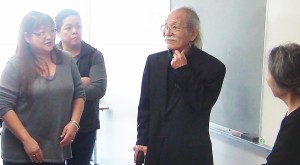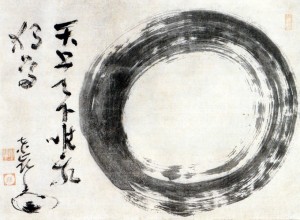I found this posting from the Daily Message that Sensei posted on October 16, 2005. I think it is truly appropriate for today's Aikidoist or martial artist. Enjoy!
If students have only average talent, it is easy for them to get discouraged and quit. They always need to focus on their courage and perseverance to continue until they can reach the level they are aiming at. With a little patience, they can always do well.
If students have too much talent and skill, it is easy for them to get arrogant or overly self-confident. These students always need to focus on their humility and modesty so they can progress even to higher levels. With a little patience, they can always do very well.
Seeing people with just a little talent quit and chase after something else and then something else again, running here and there is typical. We see this all of the time. They do not understand the meaning of Aikido practice.
Seeing people with a great deal of talent, become arrogant and haughty is very typical and often seen. They do not understand the meaning of practice.
No one can say they are in the "perfect" place for practice because true practice will always focus on your weakest point. This is the great challenge and yet the deep, profound meaning of practice.
In practice, one must always be watchful of one's self - both in body and mind. This is indeed the first step of all sincere spiritual practice.
What is the best way to practice? Who is right? Who is wrong? Who is better, who is best? Who knows? Who can say? You can only find a good teacher and trust him. In this day and age, people do not like to hear this, I don't know why. . . In early days, some people spent their entire lives to find the right teacher. By following a good teacher, knowledge and understanding will come to you. Teaching from teacher to student, from heart to heart - this is the supreme instruction - beyond right and wrong, bad or better, good and best. . . . .
Achieving this "flow of energy" in Aikido practice is essential - this flow doesn't mean "my point of view" or the "other's point of view, "flow" means that we are in tune with Nature's point of view. . . .
Some students never think to say "thank you." Whether they admit it or not, they have the attitude of a rich person in a restaurant and thinking the waitress and everyone else is there only to serve him. I see this all of the time.
When the teacher sees that the student really appreciates his efforts, he is naturally encouraged and delighted to teach him. This is the most natural thing in the world, yet many still do not understand this. However everyone knows this - as when someone thanks you for something, you naturally feel very good. . . . . the teacher instructs and the students appreciates and learns - this is how good, lasting human relationships are created and the best channels of communication are achieved.
Nowadays, however, it is a matter of money, depending on how much some teachers get, depends on how big he will smile for you - I hate this. Then some students think they can buy the teacher - I hate this too. I think this is why I will always be poor! lol!
Of course, I like money too - but selling what I spent my whole life to achieve is not worth a couple of bucks. . . . Nowadays, people do not understand that there are some things which cannot be bought for whatever price. . . . . .
Perhaps, it is not fair to everyone, but when I see a weak student do very well, I am happier than when I see a very talented student do very well. Of course, I am happy for everyone, but I think one shows a greater display of courage and patience and this makes any teacher very happy!








![kung-hei-fat-choi[1]](http://static1.squarespace.com/static/5744da899f7266e1f35c57f4/58f6512e85c5bd14e6486cce/58f651db85c5bd14e6487c49/1492537819215/kung-hei-fat-choi1-300x198.png?format=original)


